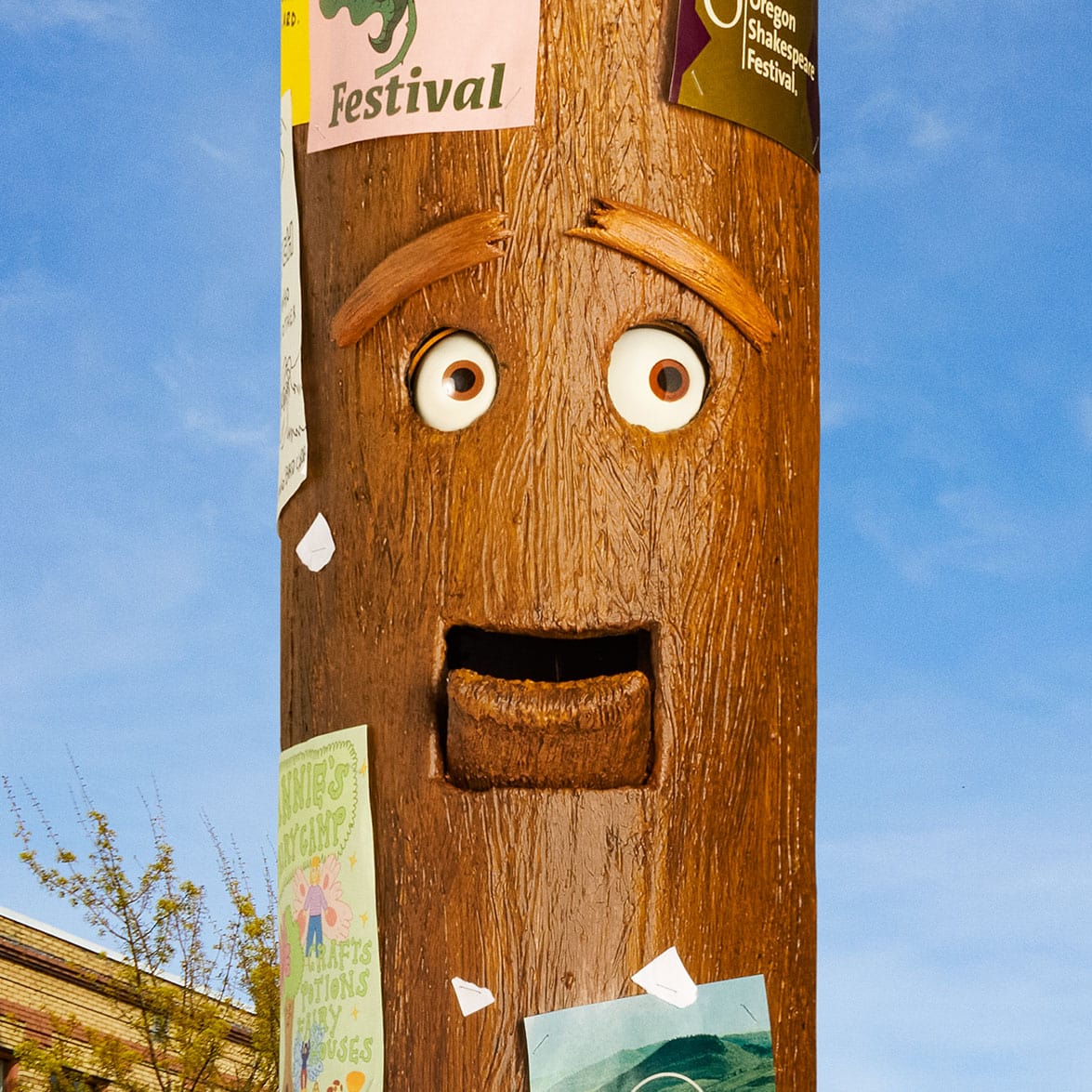This week I took a colorful hike through time through one of Oregon’s most spectacular landscapes – the John Day Fossil Beds National Monument.
From its headwaters in the Blue Mountains to its salmon-rich confluence with the grand Columbia more than 225 miles away, the John Day River twists, turns, and carves a path through a 14,000-acre treasure trove of colorful volcanic history and some of the world’s most important fossil beds.
The national monument is a three-unit preserve that draws professionals and amateurs alike from many different fields–as well as the generally curious who want to learn more about Oregon’s geologic history and a fossil record dating back 45 million years.
The Sheep Rock Unit (thirty miles west of the town of John Day) is home to the monument’s main visitor center and fossil collection. Colorful Sheep Rock looms above the narrow valley and its green fields on either side of the snaking river.
That’s about all the green you’ll see at a place that turns time on its head. When you stare up at the brown and tan rock walls in the sweltering heat that cooks like an oven, it’s hard to imagine that a lush, near-tropical forest once existed here. But according to the monument’s curator and paleontologist, Josh Samuels, “the records in the rocks don’t lie.”
Samuels added, “This is a wonderful area to study changes in plants and animals or biological evolution. We see animals coming into existence in these fossil beds and, millions of years later, disappearing. It’s also an area where we have abundant fossils, so we go out and collect fossils there It’s a very important place.”
Visitors are best served to begin their adventures at the Thomas Condon Visitor Center. Condon started collecting fossils in the 1860’s (he was actually a minister, so fossil collecting was a second job of sorts.) He found fossils in the area and sent them off to a variety of scientists at institutions in the country and really helped highlight what’s been found in this area brought it to the forefront of paleontology.”
Samuels added that classes and lectures teach you more about the region, while the center’s murals and fossils give perspective on periods that reach back 50 million years.
“You really have a jungle in those times with things like crocodiles that truly contrast with today’s dry, arid environment of open sage brush and grass land environments with things like deer, mountain lions and elk running around.” The Sheep Rock Unit is a good starting point for your journey through time. It prepares you to understand the remarkably vivid colors of the ash deposits at the Painted Hills Unit about sixty-five miles south of Sheep Rock and near Mitchell, Oregon.
The Painted Hills Unit lies at the end of a three-mile paved access road. It’s a popular site for photographers who wish to capture the brilliantly colored ash deposits that range from rose to pink, from gold to bronze, and seem splashed across the eroded contours of nearby hummocks and hills.
This is the kind of treasure Oregon legends are made of, and I never tire of an early morning or late evening visit when the light is just peeking up or winking down the hillsides. Several short hiking trails allow closer inspection, and you will also find shaded picnic tables, water, and restrooms, as well as exhibits and trail guides.
At the “Painted Cove Trail” you’ll appreciate the fact that they have built a boardwalk above the environment in order to protect it – in this case, it’s ash fall dating back 33 million years. Here you’ll witness a succession of ash-laden mudflows that repeatedly buried a forest landscape, leaving behind one of the finest fossilized collections of leaves, nuts, and seeds in North America–some 300 different species and counting.
You may have the most fun up the road at a place we visited last fall at Wheeler High School in Fossil, Oregon, where you can dig the fossils–for keeps. Kids especially love that activity. Stroll through the back gate at the high school – where donations are kindly accepted – and pass under the goal posts to take up a hand full of fossils that you can actually keep. All you need to dig your own fossils are simple tools, a strong arm, keen eyes, curiosity and a ton of patience. For more, check out this video of my last trip to Wheeler High School from the fall.
Just down the street from the school, the new Paleo Lands Institute will teach you much about the fossils that you collect and perhaps provide a new way to look at the high desert.
Editor’s Note: Grant’s Getaways is a production of Travel Oregon brought to you in association with Oregon State Parks, Oregon Dept. of Fish & Wildlife and Oregon State Marine Board. Episodes air Fridays and Saturdays on KGW Newschannel 8 and Saturdays on Northwest Cable News Network.
